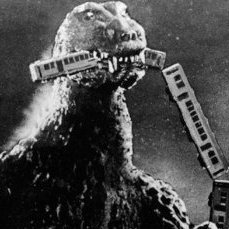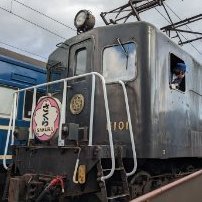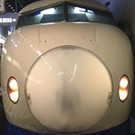Search the Community
Showing results for tags 'tokyo'.
-
New rolling stock for the Rinkai Line, the 71-000 series. Stainless steel bodies like everything else these days, but at least they're not stingy with the wrap and it's a nice blue color. These videos are on their official channel. In the first one, the opening scenery (Niigata or thereabouts) and the videography are very nice. This one is a short front view video of a nighttime test run from Tokyo Teleport to Shin-Kiba. It begins in a tunnel but exits at about 2:50, just before Shinonome Station. Line map from Wikipedia: https://en.wikipedia.org/wiki/Rinkai_Line https://en.wikipedia.org/wiki/TWR_71-000_series
-
- 2
-

-
- twr
- rinkai line
-
(and 3 more)
Tagged with:
-
Welcome to Yūrakuchō. This is the layout I have been working on for around 6 years, with construction starting last year. The plan is to recreate 1 kilometre of track around Yūrakuchō Station (有楽町駅) as accurately as I can. Openning on the 25th June 1910, the station has two island platforms serving the Yamanote and Keihin-Tohoku Lines. Running alongside these lines is the Tōkaidō Main Line (including Jōban Line services terminating at Shinagawa) and the Tōkaidō Shinkansen. A picture I took of the view from the station, in October 2019, looking towards Shimbashi. Another view from the opposite end of the platform with one of the towers on Tokyo Stations Yeasu exit visible in the distance. I am building the layout in two phases, each one representing half a kilometre. It will essentially be two layouts that can be exhibited separately or joined to form one large layout. Joe
-
If you’re a rail fan looking for a hotel to stay in Tokyo, consider the JR Hotel Metropolitan Marunouchi. The hotel sits above the Tokyo Station, convenient if arriving to /departing from NRT or Haneda, and if you ask for one of the Station View rooms, you’ll be able to watch the various Shinkansens (Tokaido, Joetsu, Hokuriku, Yamagata, Tohoku, Akita) and local trains (Yamanote, Chuo…) come and go… day and night. If you find this to be entertaining, you may never leave your room! Bonus: a neat n gage layout in the lobby. View from our 34th floor room
-
This is a placeholder post that I will edit later to be a summary of the trip, but for right now I just had to share the amazing thing that happened to me today. Also, here’s my photodump from my camera. If anyone’s curious, it’s a Canon Powershot G12 that I kinda know how to use. Eventually I will upload my phone’s photos to this folder as well. Japan Photos
-

12-car formations, bi-level green cars on Chuo Line in 2023 (was 2020)
miyakoji posted a topic in Japan Rail: News & General Discussion
Just caught this on Ompuchaneru (http://rail-uploader.khz-net.com/index.php?id=37663)... Work will start this year to prepare for the inclusion of 2 bi-level green cars in Chuo Rapid Line and Ome Line train formations. Additionally, the trains will be lengthened to 12-car formations. Based on the pdf, the bi-level green cars will be the familiar cars we see now in other Tokyo-area JRE consists. The service is planned to begin in 2020. This involves more than just building the cars; they'll have to improve stations, lines, signalling, and depots. A little green car history from the pdf: May 1969 - First-class cars on the Tokaido and Yokosuka lines are changed to "green cars" October 1980 - Green cars appear on the Sobu Line when the line's connection to and direct services with the Yokosuka Line begin March 1989 - Bi-level cars are added to Tokaido Line trains March 1990 - Bi-level cars are added to Yokosuka/Sobu Line trains July 2004 - Bi-level cars are added to Utsunomiya/Takasaki Line trains (which operate as locals until October) October 2004 - Bi-level cars are added to Shonan-Shinjuku Line trains January 2007 - Bi-level cars are added to mid-distance Joban Line trains (which operate as locals until March) JR East pdf: http://www.jreast.co.jp/press/2014/20150203.pdf -
So In march 2023 I went through japan for the 1st time since my American trip in 2018/19, and Loved every second of it. went Tokyo -> Kyoto -> Hiroshima -> Osaka -> Mount fuji/Nagoya -> tokyo in about 3 weeks and several extra days. Here are a couple of photos I took that I think were the best
- 3 replies
-
- japan rail
- jr freight
-
(and 7 more)
Tagged with:
-
I appreciate the value of YT when it comes to hosting obscure stuff like this. Construction of the western part of the Keiyo Line. The look and sound of the video seems early 80s, but the Tokyo to Shin-Kiba section opened in March 1990. Much newer than I had guessed. Be advised, there are dudes wearing only fundoshi around 9:00. Other interesting videos on the channel as well. JRTT: https://en.wikipedia.org/wiki/Japan_Railway_Construction,_Transport_and_Technology_Agency Keiyo Line: https://en.wikipedia.org/wiki/Keiyō_Line
-
- 5
-

-
- keiyo line
- jrtt
- (and 5 more)
-
Hey guys, So, after a few months of planning and thinking, it's finally time to start building this baby! Tomorrow I'll go buy all the material needed for the wooden base and in the weekend I'll start building it. This is the final layout: Since it will go into my living room, and it will be 2.40m long, it will be divided in two parts, almost in the middle, so it will be easier to handle. The base will be of plywood, 1.5cm thick, reinforced with 3x2cm frames. Since the forniture has a Wenge-like color, I'll paint the whole base of a dark color. From below, it should be something like this: The two 45 degrees corners in the front are due to the fact that the 70cm deep base will go against a 60cm deep cabinet, so I'll to cut it in order to avoid hitting my leg every time I walk by. It will go here, below the TV, on an IKEA Besta bench : The TV will limit the space above, I'll have around 30cm to play with, but it should be enough. I'll make videos detailing all the process, which will involve a lot of trials and errors I'm sure, as this is my first build, but that's the fun part! Here's the introduction video:
- 25 replies
-
- 6
-

-
- tokyo
- tokyo station
-
(and 3 more)
Tagged with:
-

Tokyo area railway lines with best/worst reputations
bikkuri bahn posted a topic in Japan Rail: News & General Discussion
An internet survey conducted last month of 703 adults living in the Tokyo Metropolitan area yielded these results(selected reasons follow): Best 3 1. Yamanote Line (convenient, the core of the transport network) 2. Tokyu Toyoko Line (runs through nice neighborhoods, passengers are fashionable) 3. Tokyu Den-en Toshi Line (same as above) Worst 3 1. JR Saikyo Line (full of chikan) 2. JR Keihin Tohoku Line (dirty image) 3. JR Joban Line (full of drunks, delinquents from the boondocks i.e Chiba, Ibaraki) http://bizmakoto.jp/makoto/articles/1505/26/news080.html -
Hello everyone! Today marks one of the first days that I've begun work on an actual (hopefully) N-Scale layout! As these first two pictures demonstrate, I finally arranged a deal to get some space for a small layout, which at the moment is 16' × 2' (really only 20", because of the upper shelf support poles.) Eventually, when time, useable space and family permit, I have plans to expand it into a reversed 'F' shape, through the use of additional shelves along a different wall, and a heavy duty wooden center island table left over from some HO-scale projects. The shelving on the rear wall will the be top part of the letter 'F', and will add about 11' by 2' (again, only 20" of that useable). Final dimensions of the center island table TBD. (Possibly 5' × 6'?) I'll try and post the potential track plan(s) later tonight! I am also always open to feedback, so please chime in, it might really help me out! Thanks for your interest! ~Phillip R.
- 113 replies
-
- 10
-

-

Odakyu 70000 Series GSE - Shinjuku to Hakone-Yumoto
miyakoji posted a topic in Japan Rail: Pictures & Videos
It seems like there are not so many types of trains that really allow for good zenmen tenbou video. A few exceptions are those on express services between Tokyo and the greater Izu peninsula area, such as the JR East 251 and various Odakyu limited express types. Our videographer, HKASAMA, rides the newest of the latter, the 70000 series, for the video below. https://en.wikipedia.org/wiki/Odakyu_70000_series_GSE https://www.youtube.com/user/HKASAMA/videos- 1 reply
-
- 2
-

-
- shinjuku
- yumoto-hakone
- (and 8 more)
-

Tsukuba Express TX-3000 series announced
Densha posted a topic in Japan Rail: News & General Discussion
The Metropolitan Intercity Railway Company has placed an order for new Tsukuba Express TX-3000 series trains. Five 6-car formations will be delivered from Spring 2020. They will be used in addition to the current fleet of TX-1000 and TX-2000 trains. Source: https://www.nikkei.com/article/DGXMZO31514700X00C18A6L60000/- 1 reply
-
- 3
-

-
- tsukuba express
- tokyo
-
(and 2 more)
Tagged with:
-

Toei announces 5500 series for Asakusa Line
Densha posted a topic in Japan Rail: News & General Discussion
Toei has announced the 5500 series for the Asakusa Line. The exterior design 'tells you it is fast' and has a livery using colours inspired by Kabuki theatre. The interior 'evokes the image of traditional Japanese washi paper' and features patterns of the Edo Kiriko glass craft. The train features a wheelchair space, larger open spaces around the doors and more hand handles. Seats will also be wider than those of the current trains. The maximum speed of the Toei 5500 series is 120 km/h, opposed to the 110 km/h of the current 5300 series rolling stock from 1991. The first new unit will be delivered in Spring 2018, after 7 other units will be delivered in the same year. The other units replacing the remaining 5300 series will be delivered subsequently, to make it in time for the Tokyo 2020 Olympics. Source: https://trafficnews.jp/post/61002/- 23 replies
-
- 1
-

-
- toei
- asakusa line
-
(and 2 more)
Tagged with:
-
Hello all, I checked around to see if someone had already posted this question, and didn't see anything close, but please forgive me if I missed something! Nearly any model train layout, especially one where the prototype is set in Tokyo, needs more transportation options than just trains, I'm talking about BUSSES! They're seen nearly everywhere, and they're certainly something that I'm currently missing... Could anyone tell me which busses would be prototypical for operating in central Tokyo, for example, around the areas the Yamanote line runs? There are so many colorful options, and I just seem to get lost in all the possibilities! I do know of the Toei bus, for which I'm looking for multiple n-scale models of, but there must be more, right? ~Phillip
-
Hi guys, i am traveling to Japan in August. While being there i will also check for some trains and stuff. Since i was in both Tokyo and Kyoto before, i know some places where to go (the obvious bic camera, yodobashi, and laos (if i remember correctly, can't find it in google maps though)). If you know some new good places, please let me know. But with my recent move to concentrate on b-trains, i am courious if you have tips for good places to buy b-trains. Both new and used. I remember that i saw 2nd hand shortys in some places in Akihabara. Any info is appreciated. Thanks a lot.
-

Tokyo Metro 13000 series and Tobu 70000 series
miyakoji posted a topic in Japan Rail: News & General Discussion
Metro and Tobu have apparently agreed on a basic design for two upcoming models, the Metro 13000 series and the Tobu 70000 series. These will be used for services that interline between the Metro Hibiya Line and the Tobu Skytree Line. Services are currently operated with a mixture of 3- and 5-door cars; these will all be 20m (sorry Toni) 4-door cars with longitudinal seating, run in 7-car formations. They will come into service from 2016 to 2019. The link below has an image showing the Metro car at top, the Tobu car in the middle, and then the Tobu car's interior at the bottom. http://railf.jp/news/2015/06/18/100000.html- 20 replies
-
- 3
-

-
- tokyo
- tokyo metro
- (and 8 more)
-
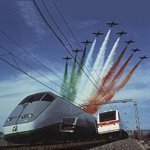
Military-purpose subway lines?! - Secrets of underground Tokyo
Socimi posted a topic in Japan Rail: News & General Discussion
http://pinktentacle.com/2010/01/secrets-of-the-tokyo-underground/ Intresting (if true) article about mysteries of underground tokyo, including theories that the Yurachuko line was built for military use, and the Toei Oedo line's tunnels already existed well before they were converted into a subway line.- 7 replies
-
- 2
-

-
- tokyo metro
- toei
-
(and 1 more)
Tagged with:
-

Japanese and Indian PM ride shinkansen
bikkuri bahn posted a topic in Japan Rail: News & General Discussion
http://the-japan-news.com/news/article/0003344992 Scenes at Kawasaki Heavy's plant in Kobe: -

The First ex-JR 205 (12 cars formation) without cabin cars in the middle of train formation
Fasubkhanali (Ali) posted a topic in Worldwide Rail
Hello, I'm Ali from Indonesia. In 27 Sept 2016, PT. KAI Commuter Jabodetabek (commuter railway corp. in Jakarta, Indonesia) was trailed run a trainset. That train is ex-JR 205 with 12 cars formation. But, this train has a something new. This is the first 12 cars formation trainset (EMU) without 2 cabin cars in the middle of train formation. Formation: クハ204-143 - サハ204-47 - サハ204-41 - モハ204-188 - モハ205-188 - モハ204-277 - モハ205-277 - モハ204-387 - モハ205-387 - モハ204-388 - モハ205-388 - クハ205-143 Previously, ex-JR 205 trainset with 12 cars formation have 2 cabin cars in the middle of train formation. It can be 6+6 or 8+4. This original train is JR 205-143F HaE24 trainset from Saikyo Line that operated with 10 cars before. Now, 2 cars (モハ204-188 + モハ205-188) from JR 205-64F KuRa H4 have added to that train. ex-JR 205-143F (12 cars formation without cabin cars in the middle) trial run at Manggarai Station video: ex-JR 205 12 cars (8+4 formation) at Manggarai Station video: ex-JR 205 from Nambu Line 12 cars (6+6 formation | NaHa 34 + NaHa 39) at Manggarai Station video: Oh yeah. Don't forget to like, share and subscribe me! :D -
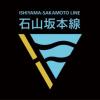
Arakawa Line new *NEW* tram: The 7700 series trams
Gordon Werner posted a topic in Japan Rail: Pictures & Videos
Here are some photos online of the new 7700 series Arakawa trams in Tokyo. Note: they are rebuilds of the 7000 series (which were themselves rebuilds) ... they retained the car bodies, and HVAC systems ... everything else (trucks, electrics, etc) is new ... they also enlarged the passenger doors so they are now a meter in width they cost ¥130M each to rebuild as opposed to the ¥180M for each 8900 series tram they are planning to have 8 ... 2 green, 3 maroon, and 3 blue and the other color variants official press release: http://www.metro.tokyo.jp/INET/OSHIRASE/2016/03/20q3h200.htm (Japanese)- 10 replies
-
- 6
-

-
- arakawa line
- tram
-
(and 3 more)
Tagged with:
-
This is a Danny Choo video shot with a camera mounted on the bike when he headed out for lunch. The route is from from Musashikoyama to Togoshi Ginza in Tokyo. The trip starts on a narrow commercial / residential street, moves out to a major artery with bike lane and then onto another narrow street but this one is a local retail center. Lots of interesting details everywhere. The grade crossing is the Tokyu Ikegami line at Togoshi-Ginza station (Ik03)
- 5 replies
-
- 2
-

-
- backstreet
- cycling
-
(and 2 more)
Tagged with:
-

three videos about working for Toei Yurikamome
miyakoji posted a topic in Japan Rail: News & General Discussion
Here are three videos I found on the Tokyo Metropolitan Government's own YouTube channel. The first one is about the Mr. Aizawa who's in charge in the CTC office: https://www.youtube.com/watch?v=x7vGx7edwu4 The next one is about Mr. Yamada, a Mitsubishi employee who designs the cars: https://www.youtube.com/watch?v=D972J7etmbk And in this one, Mr. Takaki who inspects the cars: https://www.youtube.com/watch?v=SSaWCOOLR0k Lots of other interesting stuff on this channel- 1 reply
-
- 1
-

-
- yurikamome
- tokyo
-
(and 1 more)
Tagged with:
-
Here are some interesting non-railway videos on Tokyo-to's YouTube channel. These are about 30-minutes long and promote various attractions, etc around the metropolis/prefecture, not just the 23 wards. First, a video about hiking way out at Mt. Mito and the area's flora, fauna, crafts, onsens, and food. https://www.youtube.com/watch?v=FdTRDD6lV2A One about cycling: One about bridges in Tokyo. Particularly interesting bit at 14:25 showing the control room of Kachidoki Bridge, a bascule (I think) bridge. The equipment is old but looks good. Do these things come with instruction manuals? Seems like something that everyone would forget how to use . After that, the bridge's machine room showing the trunnion bearing and shaft, and counterweights. And then after that, a small museum, which is now on my mega-itinerary . If I'm reading it correctly, it hasn't been opened since 1980. And doubly off-topic, a vid on a different YT channel about washing the window on Tokyo Sky Tree:
-
Hello all, I see works of our Hungarian members got shared on a new Facebook group page called "T-Trak Tokyo Project": https://www.facebook.com/groups/1013302152090795/ This is a group that has just started off and wants to popularise the 33mm "Alternate Spacing" module standards for a broader public, other than just tram enthusiasts. Here they take a look at what is going on abroad with T-Trak and concluded that 33mm is by far the most popular standard, as opposed to the declining popularity of 25mm in Japan. It also seems that this project will be endorsed by Kato, as the first lecture on this project will be held on the May the 29th in Kato Hobby Centre Tokyo. One of their goals will be to create the largest T-Trak layout in the world in 2020, during the Olympic year. Somehow, I feel this can become a great success, as they also want to incorporate the popular MoRaCo and the JAM. Personally, I've gotten very interested in this project, as it's a great attempt at uniting T-Trak around the world. Whereas the alternative 33mm standard has maintained its status quo around the world, the original 25mm standard has declined in popularity in Japan. Hence, I'll try to attend this meeting to keep up to date with the developments.
-
A take on current trends in urban development in Tokyo: http://urbanland.uli.org/development-business/evolving-tokyo/ *Musashi Koyama is in Shinagawa Ward, on the Tokyu Meguro Line.
- 3 replies
-
- 3
-

-
- tokyo
- development
- (and 5 more)




